Chanterelle Mushrooms / Girolle / Summer / Autumn / Edible
Chanterelle Mushrooms are a delicious mushroom, much in demand from chefs worldwide, most often found growing with beech or birch. They’re a vibrant orange colour and have the most beautiful faint apricot scent when collected in large enough quantities. The fresh flavour of the can be slightly peppery and it’s a wild mushroom to cook with simple recipes.
Scientific Name
Cantharellus cibarius
Common Names
Girolle, Chanterelle
Family
Cantharellaceae
Habitat
A fairly common mushroom, most often found growing with beech or birch and quite often in mossy areas.
Description
An easy to identify and delicious mushroom, much in demand from chefs worldwide.
Foraging Chanterelle and Girolle Video
Identifying Features of Chanterelle or Girolle Mushrooms:
Cap:
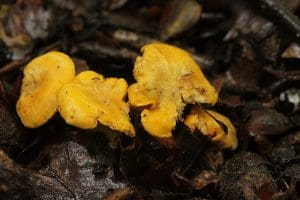
Irregular in shape. When young they are almost flat becoming more depressed with age, until almost trumpet shaped. Yellow with white flesh.
Stem:
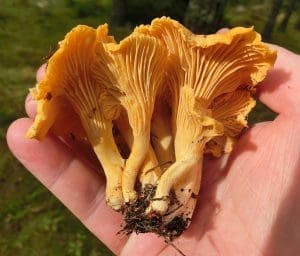
The same colour as the cap, solid, tapering towards the base.
Gills:
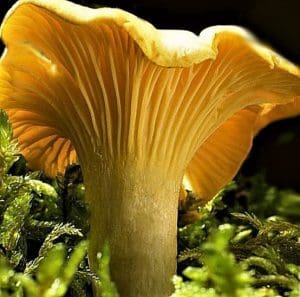
Does not have true gills, they are more like folds or ridges. One of my guides describes them as being like combed plasticine which is a good description. The gills run part way down the stem.
Smell:
Sweet, fruity almost like apricots.
Spores:
Light brown/yellow.
Uses
In food
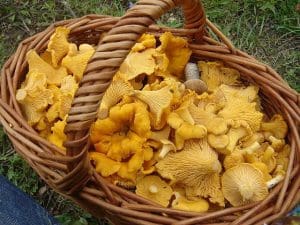
A true gourmet mushroom, they work well in any dish. Quickly fried in butter and served on toast is my favourite way to eat them.
Harvesting
They are quite a slow growing mushroom taking up to three weeks to reach a harvestable size. I tend to cover the smaller ones with dry leaves to hide them and revisit the site in a couple of weeks’ time.
Known hazards
None known.
Potential lookalikes
Its most common look-a-like is the false chanterelle (Hygrophoropsis Aurantiaca) but this has orange flesh when cut in half. This mushroom was said to be edible in some older books but there are also reports of it causing hallucinations and gastrointestinal problems so it’s best avoided.
The Jack ‘O’ Lantern (Omphalotus Olearius) does look similar but this mushroom is much more orange in colour has true gills and is very rare.



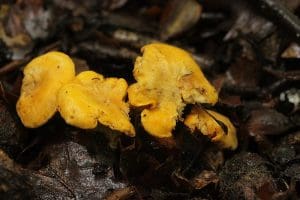
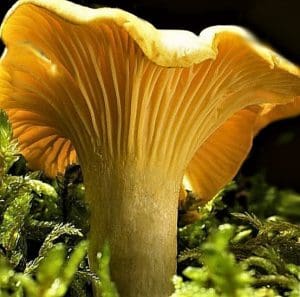
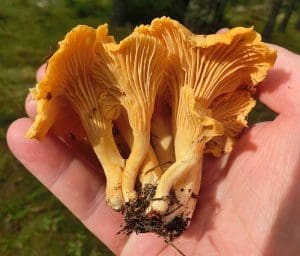




Leave a Reply
You must be logged in to post a comment.